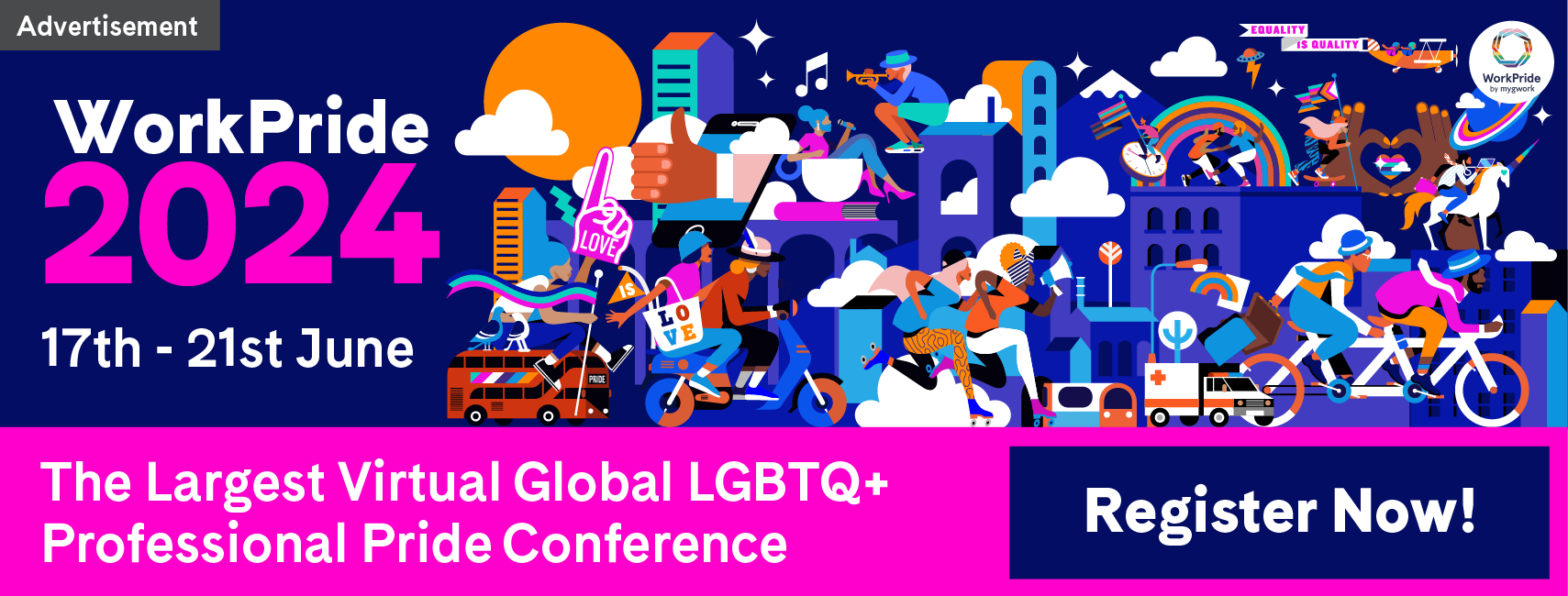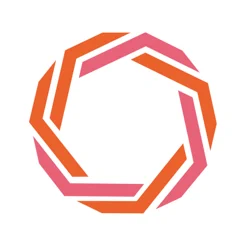What You Need To Do To Help Your Organization Thrive In LGBT+ Inclusion
This is the year 2019 and still, according to GLAAD, “more than 40% of lesbian, gay, and bisexual people and almost 90% of transgender people have experienced employment discrimination, harassment or mistreatment.”
On top of that, 34% of lesbian, gay, bisexual and transgender people in the UK choose not to disclose their sexuality at work.
The above statistics are alarming and not just for the LGBT+ community, they're also alarming for business.
A new study presented by Out Now, ‘LGBT 2020 – LGBT Diversity Show Me the Business Case’, states that the US economy could save $9 billion annually if organizations were more effective at implementing diversity and inclusion policies for LGBT staff.
So, let’s have look at what organizations need to do in order to achieve LGBT+ inclusion in their business.
Let’s start with education.
“Education is key, as is the desire to embrace people for who they are, not who they love. Once that is covered, the rest will follow” writes Bella Qvist in her article for ‘The Guardian’. You need to educate all members of your organization, whether they are members of the LGBT+ community or not.
According to Andrew Blackman “The first step to having an LGBT-friendly workplace is to set up specific policies that outline your company’s position on LGBT rights.”
You can get in touch with your HR department to help you shape these policies.
“If you don’t have one of these policies, you’re behind the times” Blackman continues. “According to Catalyst, 91% of Fortune 500 companies now have non-discrimination policies that include sexual orientation, and 83% include gender identity.
“But having a policy isn’t enough on its own. You also need to make sure that you’re very clear about what is and isn’t acceptable behaviour at your company, and establish procedures for dealing with people who violate your policies.
“Then you've got to follow through on those processes, making sure that any allegations of discrimination or harassment are taken very seriously.
“Also, go through your company policies and make sure that you haven’t unwittingly excluded people with the language you use. You’ll also need to consider changing your employee benefits to accommodate LGBT employees and their families, which we’ll look at in more detail later on.”
Stephanie Huckel, senior global program manager of diversity and inclusion at IGT. Huckel seems to agree that language is “where it starts”.
“LGBTQ language and institutional responsibility are where it begins” Huckel said while talking to Faculty of Arts and Sciences Diversity Dialogue, 'Achieving Greater Workplace Equity for LGBTQ Employees' at Harvard Hillel, ‘The Harvard Gazette’ reports.
“Queer. Some still bristle when they hear it, but in 2019, when used to describe a gay person, “queer” doesn’t carry the same pejorative connotations that it might have 25 or 30 years ago. Still, it’s important to know your audience before using it.
“Don’t use it unless you feel comfortable explaining why you’re using it,” she said in explaining the importance of using the appropriate language to describe nonbinary people. “If you don’t get it, ask, even if it makes you feel uncomfortable.”
“Forty-six percent of LGBTQ people hide who they are at work,” she stated. She continues: “What happens in the workplace when people hide some of the elements of who they are is that they do not bring their whole selves to work, and may not be as productive. “I am talking about people who are hiding in a very deliberate way: people who pretend they don’t have a partner, change the pronoun of their partner, people who lie about their experience over a weekend because it might reveal that they are gay or trans,” she said. “When they are spending so much energy literally hiding, that has real impact on individuals and their ability to show up”.
In addition to language, she said “human resource departments should look carefully at policies and procedures, including EEO and anti-harassment policies. Are they inclusive? What do your dress codes say? How do we neutralize those?” In recruiting and onboarding, “Make sure that LGBTQ folks feel welcomed and valued even if you don’t know if they are LGBTQ.”
A point all specialists agree upon is to “build an LGBT+ Network”. This is essential so that LGBT+ members of your workplace feel there is a network they can be part of.
Stonewall writes: ”LGBT employee network groups are run by employees for employees. The larger your membership, the wider the impact you can have – whether directly through peer-to-peer support or indirectly by helping to create a more LGBT-inclusive environment."
In the paper ‘Making Change’ written by David Megathlin for ‘Catalyst’ he writes: “Business-aligned networks can be a strong resource for both the employer and the employee. Many workplaces have formal affinity group programs: 57 percent of organizations who participated in the 2006 Catalyst Member Benchmarking Report have a formal LGBT network group.
“Catalyst sees a clear trend toward developing networks that are workplace sponsored and have business-focused mission statements. Network business alignment includes advising on how to improve work environments; helping with employee recruitment, development, and retention; focusing on external business development; and strengthening client relationships and communications”.
As for getting funding for an LGBT+ network, Preston Taylor put it very simply: “My tip would be, just ask. Have a clear vision and strategy, show them what you aspire to achieve, how you will get there and ask them to support you."
Role models also play a very crucial part when looking to thrive in LGBT+ inclusion in the workplace.
Sometimes, when there aren’t any role models in your workplace, the mantle of becoming one might fall on you. As challenging as it is, standing up and being that role model might make an incredible impact on someone you might not even know.
Role models are important, especially for young LGBT+ people coming up through your company. You don’t have to jump on the BBC and broadcast to the world like Daniel Gray (although we could also do with more of that). Simply coming out and sharing parts of your personal life, taking initiative with an LGBT+ network at work, or mentoring a new LGBT+ colleague could have an immeasurable impact.
While talking with MyGwork David Mayl, co-chair of an LGBT+ network talked about the important role of being a role model: “Being an LGBT+ officer makes you more visible in your workplace. Whether you are aware of it or not, you do become a role model within the business. It is important to acknowledge this, lead by example and be an advocate for all LGBT+ colleagues.
Finally, for an organization to thrive in LGBT+ inclusion it is essential that staff members who do not identify as LGBT+ are engaged. Stonewall writes: “Allies, as we call them, are a crucial element of ensuring inclusion for all. They can help spread the message that diversity is celebrated by your organisation”.
On the importance of allies, Geffrye Parsons, Managing Director & Co-Chair, Pride Network told MyGwork: “LGBT+ people exist, in most organisations, as a minority group. Therefore, to achieve the critical mass necessary to warrant attention and achieve the desired progress, the express and active support of non-LGBT+ people, i.e. allies, within the organisation, is essential. To that end, establishing an allies programme should be a priority for the network. This should focus not only on recruitment (e.g. through internal awareness campaigns and ‘marketing’) but also on how best to engage with and deploy those allies to progress the cause of LGBT+ inclusion (e.g. by providing training, educational events, helpful resources, visible collateral, etc).”
In a different article, Stonewall writes: ”We know that hate crime against LGBT people is on the rise. We know that it can be difficult to fully be yourself at work, at home, or in your local communities. That’s why we all need allies.
Being an ally is about being an active friend or support to someone else. People who aren't LGBT can be allies to LGBT people. LGBT people can be allies to each other. If we want to live in a world where people are accepted without exception, we all need to be part of the solution”.
Equality in the workplace will always require work and the LGBT+ community are only one part of the picture. Lead a change, celebrate the people who break the mould and give everyone in your organisation the tools they need to embrace diversity and accept people for who they are. It’s a lesson that will be with them for life.
Back to work!
Keep up to date with the latest myGnews

